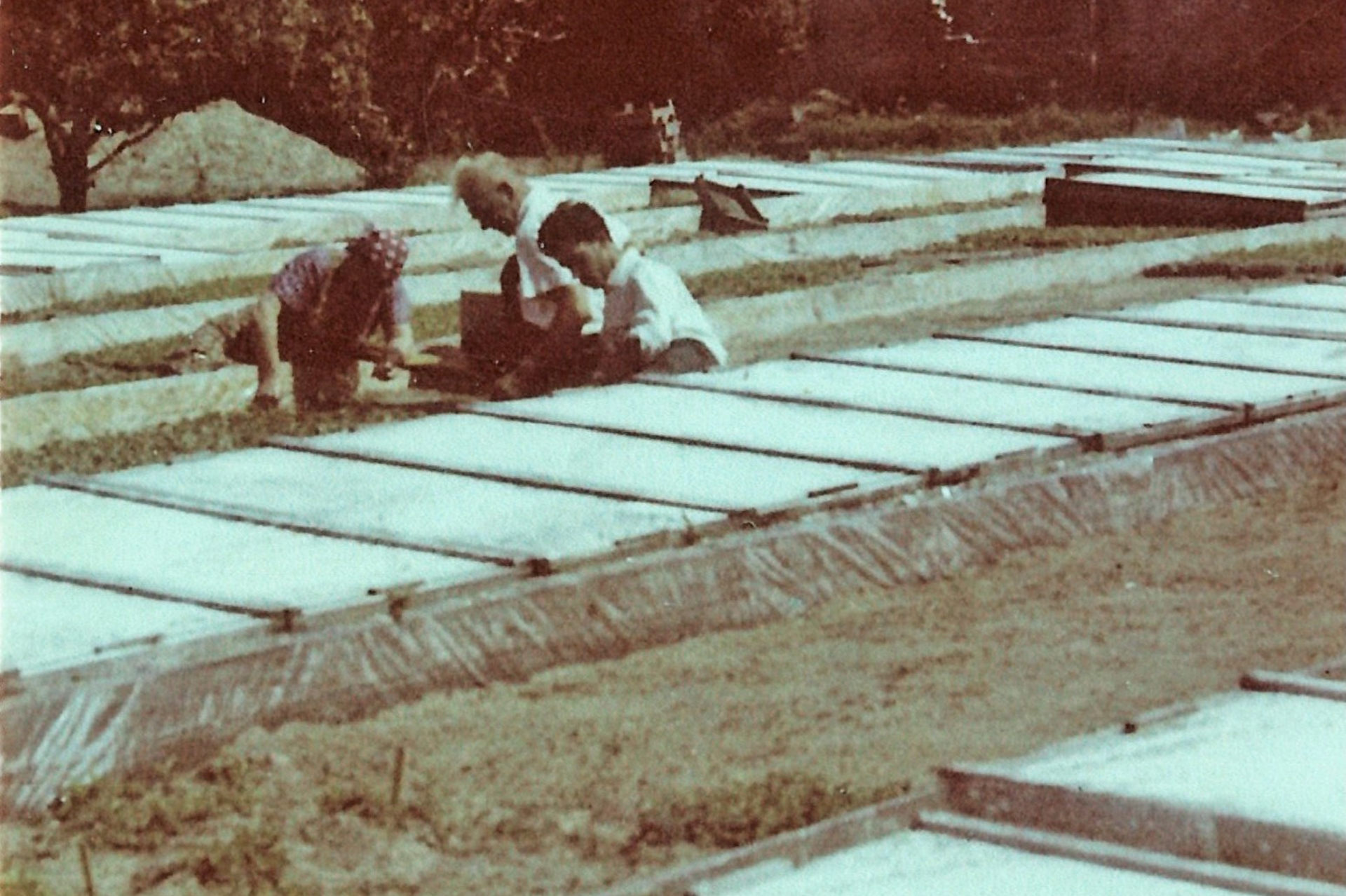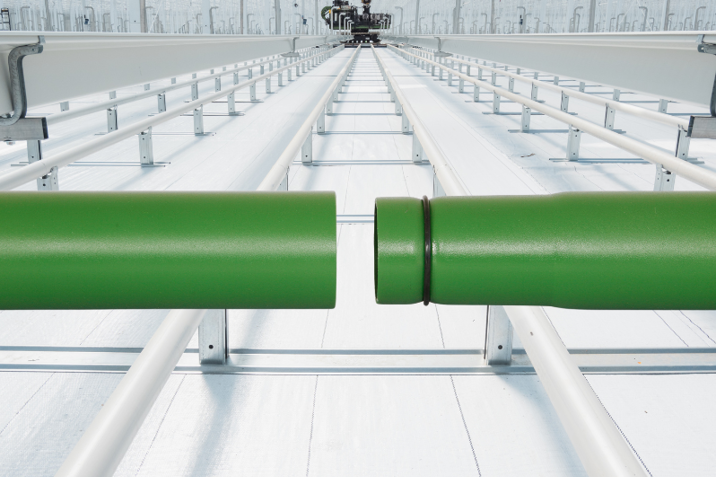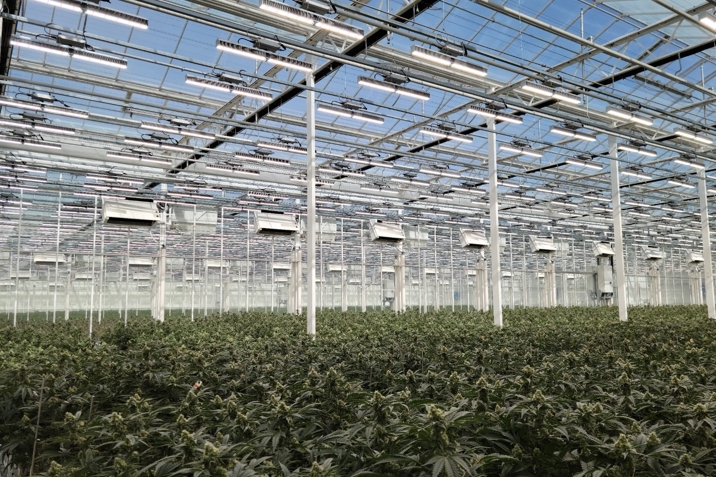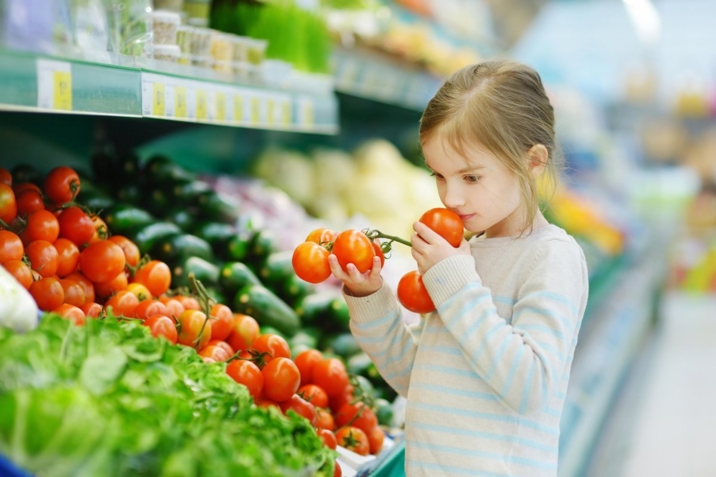The market for Dutch-grown tables-grapes however came to an end during the second World War. After that it never got picked up again, as the Dutch cultivation became outcompeted by Southern European countries. Strongly influenced by the innovations and developments in transportation means during the war.

Flat-glass: The ancestor to Dutch greenhouses
Parallel to the innovations for the cultivation of grapes, was the introduction of single-paned frames around the 1880s. These were primarily used for vegetable cultivation such as melons and beans. By the early 20th century, greenhouses made of these frames, known as "warehouses," covered 420 hectares by 1939.

The early 20th century marked a renewed flourishing period for Westland, establishing it as a prime horticultural hub compared to other Dutch regions. By 1904, with its 134 hectares of flat-glass, Westland, along with nearby Delft and Rotterdam, stood head and shoulders above regions like North Holland, which had only 26 hectares. Just over two decades later, Westland’s under-glass vegetable and fruit cultivation accounted for approximately 75% of the entire Dutch glass surface area.
As depicted best in the illustrations above, it is the flat-glass that ended up to become the greenhouses as we know them today. The continuous challenge to have produce on the market, required heating systems, better irrigation systems and on and on. To accommodate this, more space was needed and the double-flat-glass beds where raised. This eventually led to greenhouses people could walk in. Up until the early seventies greenhouse construction companies were carpenters, and the heating system providers were blacksmiths. In the late sixties and early seventies the first climate computers were introduced in the late sixties & seventies by renown companies we still know and work with today; Ridder, Priva & Hoogendoorn. Many companies supplying to the under-glass cultivation also stood the test of time, such as Royal Brinkman that started by selling rope to bundle asparagus with back in 1885!

Conditions for the industry to develop
There were several factors that played into Westland’s rise as the number one horticultural region of The Netherlands. Its proximity to urban markets such as Delft and The Hague, in combination with excellent waterway connections to further cities proved very beneficial. The moderate coastal climate, characterized by mild winters and cool sunny summers, gave Westland farmers a competitive edge, allowing them to bring their fresh produce to the market slightly earlier than their inland counterparts.
Beyond these geographical and climatic conditions, in my opinion, the very essence of Westland’s success lay in the character of its people. A thesis dating back to 1933 written by A.A.A. Verbraeck described the Westlanders as having an unparalleled work ethic, entrepreneurial spirit, and a keen desire for financial success. Their readiness to modify their environment for horticulture, be it adapting the landscape or the soil quality, is a great example:
Turning the odds into your favor
However, not all of Westland had naturally suitable soil for horticulture. While areas like 's-Gravenzande, Monster, and Naaldwijk had favorable sandy soils for horticulture, others required significant modification. Large-scale sanding projects were initiated, with up to five million cubic meters of sand being transported to improve the land before 1950. To bring this into scale the size of the island of Manhattan dug out or filled-up by 60m.
In their pursuit of fertile land and profitable cultivation, the Westland’s growers resorted to organic fertilizers, using silt from ditches, pig manure, and even human waste from surrounding cities. This adaptability, while not completely unique to the Westland, demonstrates their relentless drive to create the best conditions for farming.

The journey of Westland from a traditional agricultural region to a horticultural powerhouse is a true testament to three core principles:
· Continuous Innovation: From fruit walls to sophisticated glass greenhouses, due and despite of the market conditions the kept innovating; Westland has always been at the forefront of agricultural innovation.
· Hardworking Mentality: The determination and work ethic of the Westlanders have been key in the region’s success.
· Adapting to Changing Conditions: Whether it was modifying the soil or changing farming techniques, the Westlanders never shied away from altering their environment to meet their horticultural needs.
Consult the past to foresee the future
It was the first climate computer in the seventies that allowed greenhouses to become higher, and I’m certain it is again climate computers that will propel our industry forward in the mid and late twenties. Not this time by eliminating a manual opening of a ventilation window, but by eliminating a portion complex day-to-day tasks of both growers and workers through branches of AI such as machine learning and robotics. This will empower growers to focus on their niche produce, market demand and give them time for their intangible parts of their added value.
Today, the greenhouse industry in the Westland stands under political and economic pressure, regardless of their global position as frontrunner in horticultural excellence. If we as region and as greenhouse industry stay close to the principles that brought us where we are today, I’m certain that the challenges will be overcome, leading to new innovations in horticulture.
Fortunately, the principles of innovation, hard work, and adaptability still runs through the veins of most men & women in the Dutch greenhouse industry to create the Future of Food Farming together!










